Fish farming in India is a popular form of agriculture. A well maintained fish pond can give a handsome profit. Learn how to set up fish rearing ponds and start fish business.
Fish farming is also called ‘pisciculture’ and is the practice of commercial fish rearing in enclosed tanks. In India, it is an important sector contributing to agricultural exports and food security in a major way. Since the demand for fish as a food is increasing it has resulted in overfishing worldwide causing a depletion in the population. This has led to establishment of fish farms or aquaculture wherein fish is grown artificially in man-made ponds or tanks. Aquaculture has now become so popular that more than 50% of the total fish population in the world came from aquaculture alone in 2016. Globally, 62% of the total fish supply comes from China.
Advantages of Fish Farming in India
- At least 60% Indians consume fish as a part of their regular meals.
- The demand for fish being high in the market, its price is also very high ensuring good income.
- The subtropical and tropical climate of India is ideal for growth and production of fish.
- Since there are abundant water sources in India like lakes, ponds, rivers, streams, etc. it is not very difficult to procure fish and grow them in the farm.
- Growing fish in a farm is not a laborious process. Additionally, it can be integrated with other types of farming like poultry, vegetables, animals, etc. Integrated aquaculture is very popular among farmers.
- Since fish farming business is not as laborious as other types of farming, it is easy to handle along with regular work. It can be also easily managed by other family members of the house like kids and women.
Setting up Fish Farming Ponds
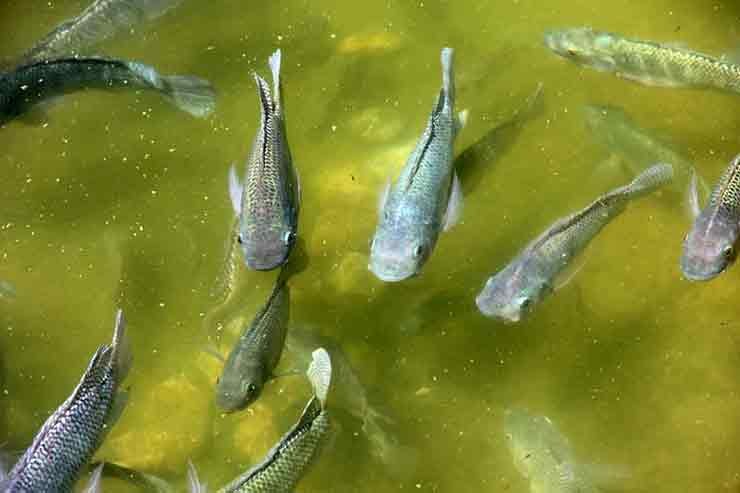
Fish rearing in pond has some specific requirements. Before constructing a pond it is necessary to choose the right type of site. Hence the first step in fish farming is selecting the right type of site.
Site Selection
The success of a fish business depends on the selection of the right place. The site chosen must have a good water supply all year round and the soil must have a good water retention capacity. Site selection factors can be divided into 3 categories as:
- Biological
- Ecological
- Social
Biological Factors
Biological factors are concerned with fish species chosen for culture purposes. Seed source, variety, culture type, species, etc. must be considered at the time of establishing a fish farm.
Ecological Factors
Climate, soil, water and topography are the primary factors that must be considered when constructing fish farming ponds. These can be enumerated as below:
- Primarily the soil must be able to hold water in a pond. That is it must have good water retention capacity.
- Take a handful of soil in wet hand and squeeze it. If the soil retains the shape after opening the palms, the soil is suitable for establishing a pond.
- Rocky, limestone, sandy soil must be avoided since they cannot retain water.
- Loamy soil, clayey soil, silt etc. are best suited for pond construction.
- Gravel if present must not be more than 10%.
- Water must have a neutral pH. In case of acidic or alkaline water suitable corrections must be done.
- The pond must be constructed near natural water bodies like ponds or rivers. However, it should be away from flooding area.
- Water salinity is another factor that must be considered as not all fish can tolerate saline water.
- Land topography is essential for engineering the pond construction. Areas like industrial zone, flood prone areas, areas with poor rainfall, electricity poles and densely rooted vegetation must be avoided.
Social Factors
Considering social factors while starting a fish business may sound paradoxical. This is however important since the tradition and culture of the place must be taken into account. This would ensure acceptance of the farm by the locales and no legal issues. Other factors include market aspects, transportation, accessibility, infrastructural facilities, etc.
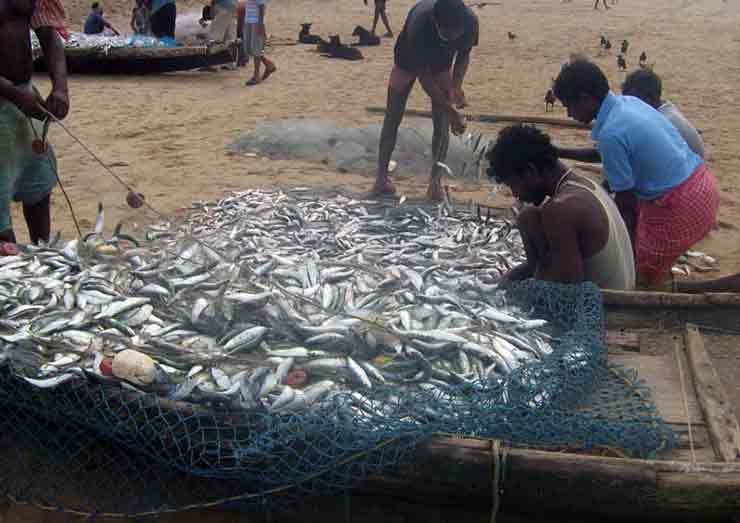
Pond Construction for Fish Farming in India
Pond construction at the chosen site involves a series of steps such as cleaning the site, constructing the bank or dyke, digging the pond, constructing the inlets and outlets, covering the dyke and last but the least- fencing the pond.
Clearing the Site
The site must be cleared of bushes, tree stumps and other such debris. Trees and other vegetation within 10 meters of the pond area must be cleared away. In addition about 30 cm of surface soil must be cleared since they are likely to contain roots and other organic debris that interfere with the pond development.
Digging and Constructing Dyke
An ideal dyke must contain 15-30% silt, 30-35% clay and 45-55% sand. After digging the dyke the ridge must be in proportion with the slope. A mixture of sand and clay in 1:2 proportions must be deposited to form a 15 cm thick layer in order to elevate the dyke. This is done at the center of the pond. Generally, digging is done in plain areas while in hilly areas, embankment method is followed. The dykes are erected on the sides as per need. However, embankment method cannot be followed for fish culture since it is difficult to get the standard depth and size as per specifications.
Constructing the Inlet and Outlet
Ponds must be filled with sufficient quantity of water for which feeder canals are constructed alongside. The inlet and outlets permit flow of water. Inlets are constructed at the top of the pond while outlets are at the pond bottom. The inlet pipes must be designed such that they do not take more than 2 days to fill. Outlets are used when dewatering of the pond to harvest the fish becomes necessary. It is also used to drain out the stale water while replacing it with freshwater so as to maintain the water quality.
Types of Fish Farming Pond
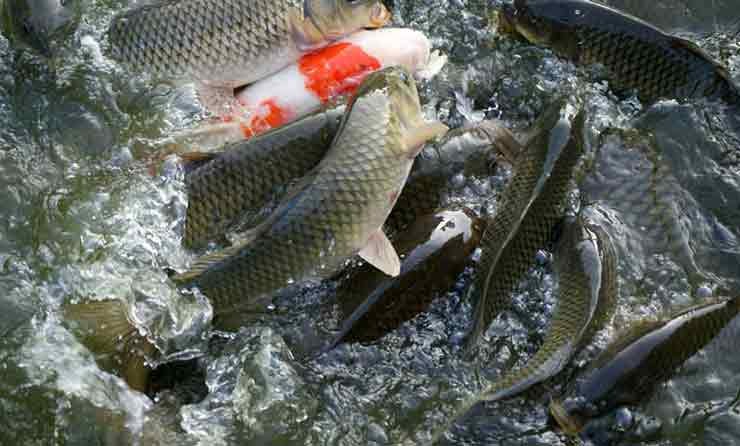
There are different types of ponds based on the growth stage of the fish such as:
Nursery Pond
3 day old spawns are reared in this pond until they attain a length of 2-3 cm. This takes about 30 days.
Rearing Tank
Tiny, newly-hatched fish grow and start feeding themselves. However they are not fully grown adult fish. Such fish called ‘fry’ are reared in the rearing ponds till they attain a size of 12-15 cm. These fish are called fingerlings.
Stocking Pond
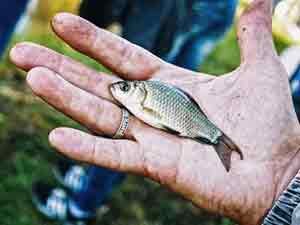
The fingerlings are grown in the stocking pond and reared into marketable sized fish. The duration varies between 8- 10 months. Although there is no specified rule about the pond size, the area of the pond ranges between 1-2 hectares.
Bio Pond
Bio-ponds are settling tanks that are sometimes also used as stocking ponds. The water meant for the fishpond is biologically purified in this pond.
Selecting the Fish Breed
After pond construction the next step is to choose the right type of fish breed for rearing. The first point to be considered here is the type of fish to be reared- whether ornamental, freshwater or brackish water fish. Choosing the right type and breed depends on the type of water in the pond, resource availability, climate conditions and market demand. For example, carp varieties of fish like rohu, catfish, catla, grass carp, etc. is meant for the Indian ponds. Some farmers grow two or more different breeds of fish in the same pond as this ensures better utilization of resources. In case of ornamental fish, some of the commercially important species are loaches, barbs, freshwater sharks, danio, goldfish, etc.
Feeding the Fish
While rearing fish in ponds, feeding is done to ensure that the fish attain maximum weight as per market standards within the shortest possible time. However, while feeding and rearing care must be taken to maintain the water pH between 7 and 8 for optimal growth. The feed must provide essential nutrients for the growth, maintenance and reproduction. The feed must contain essential nutrients like proteins, carbohydrates, vitamins and fats in addition to other minerals in sufficient quantities. It is easier to maintain natural foods in the fish pond like zooplankton, phytoplankton, insect larvae, etc. That way, the natural habitat necessary for growth of the fish is maintained to some extent. The growth of phytoplankton can be given a boost by adding various wastes from organic farming to the pond such as poultry droppings from poultry farming, organic compost, etc. In addition, supplementary feed is given in moist or dry form. For fish that feed from top layers, floating pellets can be given while those feeding from the bottom are given sinking pellets.
Fish Farm Maintenance
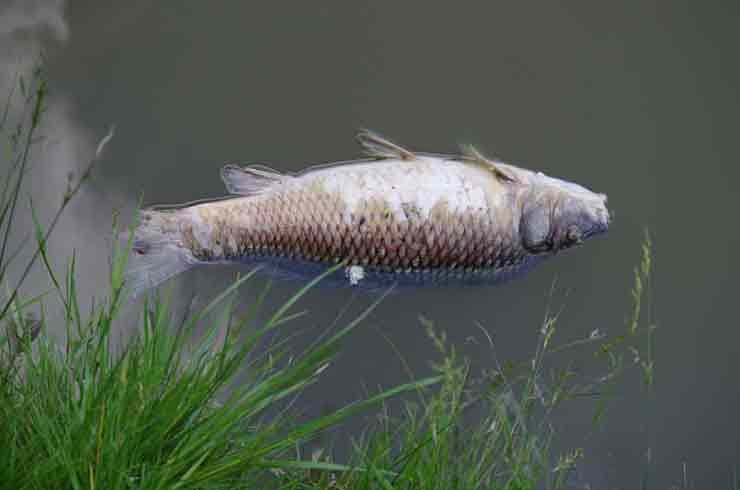
The first precaution in fish farm maintenance is to maintain the water pH. The pH must be maintained at neutral for optimal growth of the fish. In addition it must be treated with salt, potassium permanganate, etc. to prevent growth of pathogens. Occasional water treatment also ensure prevention of viral attacks.
Fish farming in India is a profitable business. One can start a stand alone fish farm or integrate it with other farming to minimize the risk and maximize the profit.
Reference
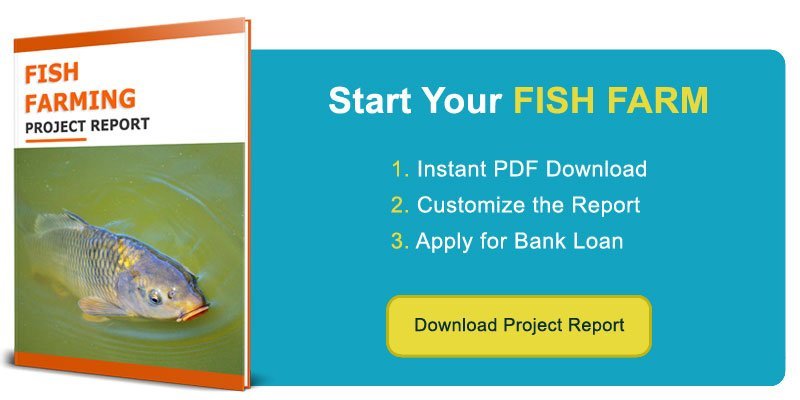
Very interesting.
I need to learn more on modern method of farming in closed spaces
Great article .. providing this much valuable information on every aspect what you should know and need to know about fish farming and other such stuff but what if we need to know about Biofloc fish farming system.
Because For traditional or conventional fish farming system one should need a good amount of land but if someone who has small piece of land can not do Traditional Fish Farming so Biofloc is something which can help getting better earning in small piece of land.
I am not promoting our selves here but when we wanted to start Biofloc fish farming we did not get any good recourse to get required help. We tried various places and collected required stuff and started Biofloc fish farming and it has been 2 years we do not think we stepped into a wrong business.
Please advise from where can we have proper training etc. for fish farming. Need to see the overall procedures, cost involvement, suitable places.
Please download our project report on inland fishery for complete economics and technical details.
Please provide the project report of fish farming
From starting fish rearing to feeding and costing calculations
A good way of giving a knowledge, how to start a fishing business..Appreciable work, I also want to start this business after few months, so that I want to know all of business details & stabilise a higher level of this business…How I contact you,
Thanks and regards
Er. Rohit Singh
Thank you for your interest in fish farming. We shall get in touch with you when will shall get started the consultancy service.
Hi i want to start fish farming in utter predesh . I want to know all the details how i contect you
Regrd
Rajiv
Hi sir, I Have fish farm in Tamilnadu, I am farming sea bass fish, my pound water salinity is 4.5, how to reduce it and how to maintaine PH level, and what feed food good for sea bass? Please help me thank you.
Hii sir I am kamesh singha from West Bengal Siliguri . I want to start fish farming. . And I want all the details of fish farming. Please sir help me me out .
solomon james
i want tostart fish farming in uttar pradesh looking for bio flock fish farming help me to geta project report.
thanking you
solomon
Do we have complete project report for Fish Farming/Aqua Culture? Currently your webpage offers only two project reports, i.e. Dairy Culture.
The project report shall include complete guide from scratch:
– Approximate Capital Investment
– Infrastructure Building and Resources
– Maintenance
– Labor Strength
– Stocking/Rearing techniques
– Marketing and Selling
– Top Seed Sources
– Top Buyers
– Start-up Financial Solutions
Anticipating positive response.
Regards,
Mudassir Madni
Hi
Want to start fish farming in Goa having a 2 acre land. It was a salt pan earlier now just left doing nothing
Hello sir,
Rajesh sajwan from dehradun and I’m very interested to start fish farming.
Please guide me.
Thankyou!
Good evening
I like to start a fish farm in my village home in Jessore in Bangladesh. This is a medium type of pond and will be used for family cum semi commercial purposes.
The pond size is 100 feet long x 60 feet wide x 7 feet deep. It needs to supply artificial water by Shallow Tube well in the Winter or in the Dry season.
I like to cultivate fishes like shrimp/ pabda / Koi/ Tilapia in the first layer of water ( pl. suggest me suitable spices and fish population for the 1st layer).
Catfish and others in the second layer of water. ( pl. suggest me the spices of fishes for the 2nd layer and fish population )
Ruhi / katla/ Mrigal in the 3rd layer of water.( pl. suggest me the spices of fishes in the 3rd layer and fish population)
I am not an expert in fish cultivation and have experiencing but like to start cultivation with your suggestions. Pl. suggest me :
1. Is it possible to cultivate those fishes in those layers of waters? Or different spices of fishes suitable in each layer ? 2. The fish spices population to be maintained in each layer.
With thanks and regards.
Asdadul Baqui
I want to start a fish farming unit in Kerala .Need advises.
Dear sir
I want to start fish farming in one acre land kindly guide…..for start up in balasore,odisha…… Also detailed project report is required to apply for bank loan…… Kindly support…
Hello Rajesh, please download our detailed project report on fresh water fish farming in pond. This DPR contains detailed technological and economical details about polyculture fish farming.
Download link:
https://www.farmatma.in/product/fish-farming-project-report-pdf/
Im interested to do a aquafarming i have 5 acres to start the business , so my question is were should approach or whom to contact the right person to get ideas to buy and sell the fishes.
Can i start fish farming in well, it is 100 feet,
Please give a comment
I am interested in Catfish pond farming report how we get with current rate
Dear sir,
I want to open a fish farm in Abu-Road, Rajasthan. I need your help to establish this bussiness and also need to undestand the whole process of this farming technique.
So help me with your positive reply.
Thank you.
i m interested to start fish farming business i need full details to study
I want to start fish business
I have a plot vacant of 133sqyds
Size is 20ftx50ft
How much will be the investment
Water and electricity can be arranged
What will be the returns
Please reply
Thanks
PRAKASH
im interested for fish forming in my field i need your guidance
Hey ! We are planning to start this business . But we need someone who could help us teach all this . How can we contact you?
I am rajasthan samaysingh machya my pond is tha big katla /rahu fish my coice fish
Am interested in fish 🐟 farming
Am an African but right now am in south Korea.
Am willing to do this fish business in Cameroon.
Hi please call me